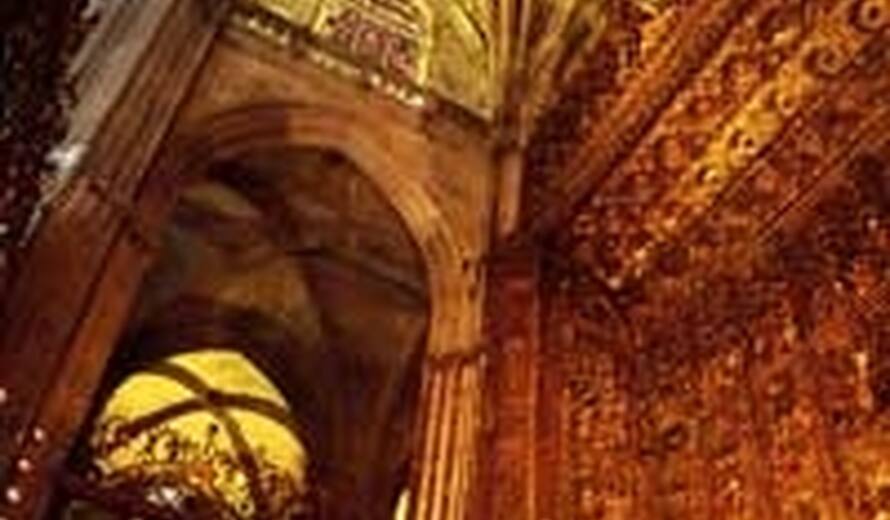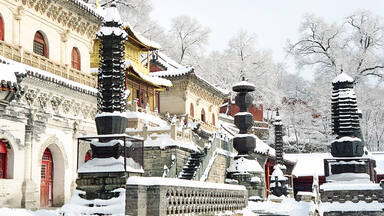World Heritage Committee to meet in Seville to review state of conservation of 178 sites and add new sites on List
The World Heritage Committee will consider requests for the inscription of new sites on UNESCO's World Heritage List when it meets for its 33rd session in Seville, Spain, from 22 to 30 June.
During this year's session - to be chaired by María Jesús San Segundo, the Ambassador and Permanent Delegate of Spain to UNESCO - 35 States Parties to the World Heritage Convention will present properties for inscription on UNESCO's World Heritage List. Three of those countries - Burkina Faso, Cape Verde and Kyrgyzstan - have no properties inscribed on the World Heritage List to date.
Thirty new properties in total were submitted for inscription on the World Heritage List this year: 4 natural, 23 cultural and 3 mixed (i.e. both natural and cultural) properties, including 4 transnational nominations. In addition, 7 extensions to properties already listed have been proposed (see list below).
The Committee will dedicate a large part of the discussions during the session to review the state of conservation of 178 sites already inscribed on the World Heritage List. The Committee will also review the state of conservation of the 30 World Heritage properties inscribed on the List of World Heritage in Danger and may decide to add to that list new properties whose preservation requires special attention. The List in Danger features sites which are threatened by a variety of problems such as pollution, urban development, poorly managed mass tourism, wars, and natural disasters, which have a negative impact on the outstanding values for which the sites were inscribed on the World Heritage List.
One of the properties on the List in Danger, the cultural landscape of Germany's Dresden Elbe Valley, will come under particular scrutiny as the Committee will decide whether to remove the property from the World Heritage List because of the building of a bridge in the heart of the landscape.
To date, the World Heritage List recognizes 878 properties of "outstanding universal value," including 679 cultural, 174 natural and 25 mixed properties in 145 States Parties.
The Convention encourages international cooperation to safeguard the common heritage of humanity. With 186 States Parties, it is one of the most widely ratified international legal instruments. When signing the Convention, States Parties commit to identifying sites for potential inscription and to preserving sites on the World Heritage List, as well as sites of national and regional importance, notably by providing an appropriate legal and regulatory framework.
The World Heritage Committee, responsible for the implementation of the 1972 Convention, comprises representatives of 21 countries, elected by the States Parties for up to six years. Each year, the Committee adds new sites to the List. The sites are proposed by the States Parties. Applications are then reviewed by two advisory bodies: cultural sites by the International Council on Monuments and Sites (ICOMOS), and natural sites by the International Union for Conservation of Nature (IUCN), which inform the Committee of their recommendations. The International Centre for the Study of the Preservation and Conservation of Cultural Heritage (ICCROM) provides expert advice on conservation and training in restoration techniques.
The World Heritage Committee also examines reports on the state of conservation of inscribed sites and asks States Parties to take appropriate conservation and preservation measures when necessary. The Committee supervises the disbursement of over $4 million annually from the World Heritage Fund, aimed, among other purposes, at emergency action, training of experts and encouraging technical cooperation. UNESCO's World Heritage Centre is the Secretariat of the World Heritage Committee.
Accredited journalists will be able to attend the opening ceremony of the 33rd session (22 June), which will include the participation of the Chairperson of the World Heritage Committee, representatives of the government of Spain, the Director-General of UNESCO, Koïchiro Matsuura, the President of UNESCO's General Conference, George N. Anastassopoulos (Greece), and the Chairman of UNESCO's Executive Board, Olabiyi Babalola Joseph Yaï (Benin). They will be informed of the work and decisions of the Committee in regular press conferences during the Committee session.
Natural properties submitted for inscription to the World Heritage List
- The Wadden Sea (Germany and the Netherlands);
- The Dolomites (Italy);
- Tubbataha Reefs Natural Park (extension to the Tubbataha Reef Marine Park, the Philippines);
- Korean Cretaceous Dinosaur Coast (Republic of Korea);
- Lena Pillars Nature Park (Russian Federation).
Cultural properties submitted for inscription to the World Heritage List
- The Architectural and Urban Work of Le Corbusier (Argentina, Belgium, France, Germany, Japan, Switzerland);
- City of Graz - Historic Centre and Schloss Eggenberg (Extension to the City of Graz Historic Centre, Austria);
- Tangible Spiritual Heritage of St. Euphrosyne of Polotsk (Belarus);
- Stoclet House (Belgium);
- Cultural property of the historic town of Jajce (Bosnia and Herzegovina);
- Gold Route in Paraty and its Landscape (Brazil);
- The Ruins of Loropéni (Burkina Faso);
- Cidade Velha, Historic Centre of Ribeira Grande (Cape Verde);
- Historic monuments of Mount Songshan (China);
- Historic town of Grand-Bassam (Côte d'Ivoire);
- Sites of Great Moravia: Slavonic Fortified Settlement at Mikulčice - Church of St Margaret of Antioch at Kopčany (Czech Republic and Slovakia);
- The Causses and the Cévennes (France);
- From the Great Saltworks of Salins-les-Bains to the Royal Saltworks of Arc-et-Senans, the production of open-pan salt (Extension to the Royal Saltworks of Arc-et-Senans, France);
- Schwetzingen - A Prince Elector's Summer Residence - Garden Design and Freemasonic Allusions (Germany);
- Shushtar Historical Hydraulic System - Bridges, dams, canals, buildings and watermills from ancient time to present (Iran);
- The Triple-arch Gate at Dan (Israel);
- Italia Langobardorum. Places of power and worship (568-774 A.D., Italy);
- Sulamain-Too Sacred Mountain (Kyrgyzstan);
- The Mercury and Silver Binomial on the Intercontinental Camino Real. Almadén, Idrija and San Luis Potosí (Mexico, Slovenia and Spain);
- Mehrgarh, Rehman Dheri and Harappa as an extension to the Indus Valley Civilization Sites (Extension to the Archaeological Ruins at Moenjodaro, Pakistan);
- Sacred City of Caral-Supe (Peru);
- Royal Tombs of the Joseon Dynasty (Republic of Korea);
- Church of the Resurrection of Suceviţa Monastery (Extension to the Churches of Moldavia, Romania);
- Levoča and the Work of Master Paul in Spiš (Extension to Spišský Hrad and its Associated Cultural Monuments, Slovakia);
- Tower of Hercules (Spain);
- Seruwila Mangala Raja Maha Viharaya (Extension of the Sacred City of Kandy, Sri Lanka);
- Farms and Villages in Hälsingland (Sweden);
- La Chaux-de-Fonds / Le Locle, Clock-making town planning (Switzerland);
- Pontcysyllte Aqueduct and Canal (United Kingdom).
Mixed properties submitted for inscription to the World Heritage List
- Mount Wutai (China);
- Lonjsko Polje Nature Park - A Living Landscape and the Floodplain Ecosystem of the Central Sava Basin (Croatia);
- The Cultural Landscape Orheuil Vechi (Republic of Moldova).
Please note that States Parties can withdraw a nomination request before the start of the Committee meeting.
Media wishing to obtain accreditation to the 33rd session should see: http://www.33whc.sevilla2009.es/en/


